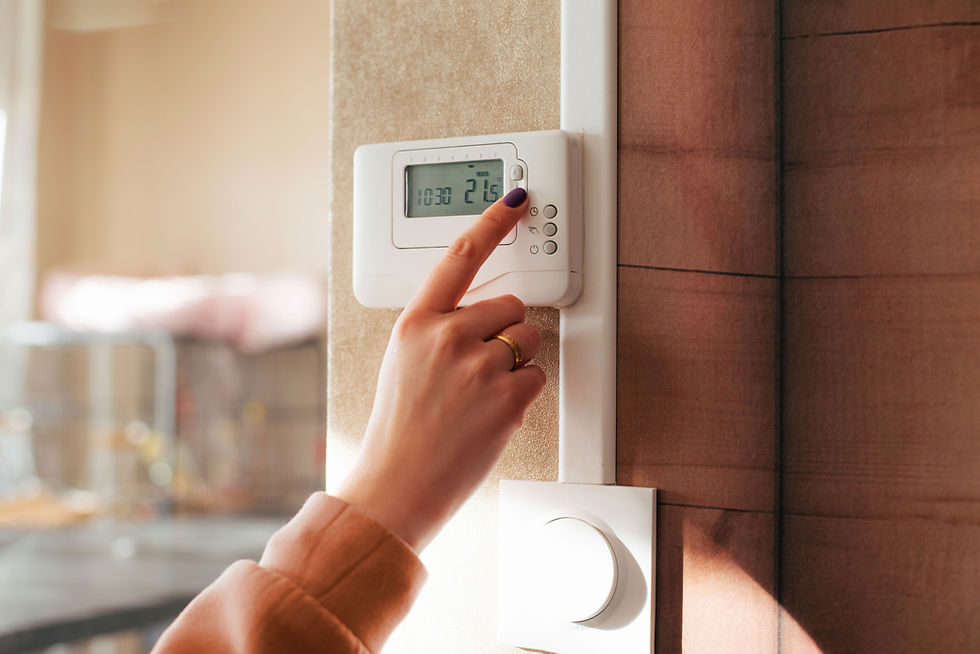Indoor Air Quality and Dust: Understanding the Impact on Our Health
- Clean Air HVAC Care
- Feb 19
- 3 min read
Indoor air quality (IAQ) is a growing concern for homeowners, particularly as people spend more time indoors. According to the U.S. Environmental Protection Agency (EPA), indoor air can be two to five times more polluted than outdoor air, and in some cases, even more. This alarming statistic highlights the importance of understanding what's in our indoor air, particularly the dust particles that settle in our homes.

What’s in Our Dust?
Dust is not just an unsightly nuisance; it is a complex mixture of various particles. Common components of household dust include:
- Pollen: Seasonal allergens that can trigger respiratory issues.
- Mold spores: Fungi that thrive in damp environments and can lead to allergies and other health problems.
- Pet dander: Tiny skin flakes from pets that can exacerbate allergies and asthma.
- Dust mites: Microscopic organisms that feed on dead skin cells and thrive in bedding and upholstery.
-Chemical residues: Traces of household cleaners, pesticides, and personal care products can accumulate in dust.
The EPA emphasizes that poor IAQ can lead to a range of health issues, including headaches, dizziness, and respiratory problems. With the average person inhaling about 11,000 liters of air daily, it's crucial to maintain a clean and healthy indoor environment.

Ways to Improve Indoor Air Quality
Homeowners can take several proactive steps to improve their IAQ, particularly regarding dust and other pollutants. Here are five effective strategies:
1. Clean Often and Use Fewer Chemicals
Regular cleaning helps to minimize dust accumulation and improve air quality.
Helpful Tips:
Dust Regularly: Use microfiber cloths to trap dust instead of spreading it around. Focus on high-traffic areas, electronics, and furniture surfaces.
Vacuum with HEPA Filters: Invest in a vacuum cleaner equipped with a HEPA filter to capture small particles, including allergens. Vacuum carpets, rugs, and upholstery frequently.
Choose Natural Cleaners: Opt for non-toxic cleaning products or homemade solutions, such as vinegar and baking soda, to reduce chemical residues in your home.
2. Change Your HVAC Filter Regularly
Your HVAC system plays a crucial role in maintaining IAQ, and the filter is its first line of defense against dust and pollutants.
Helpful Tips:
Check Filters Monthly: Inspect your HVAC filter every month. If it appears dirty or clogged, replace it, typically every 1-3 months, depending on usage and filter type.
Upgrade to Higher-MERV Filters: Consider filters with a Minimum Efficiency Reporting Value (MERV) rating of 8 or higher, which can trap smaller particles more effectively.
Install a Filter Reminder: Use a calendar or app reminder to keep track of when to change your filter, ensuring you don’t overlook this important task.
3. Clean Your HVAC System
A clean HVAC system helps improve airflow and reduces dust circulation throughout your home.
Helpful Tips:
Schedule Professional Cleanings: Hire a professional to clean your HVAC system at least every few years. They can remove dust, mold, and other contaminants from ducts and components.
Inspect Ducts for Leaks: Check for any leaks in your ductwork that can allow dust and allergens to enter your living space. Seal any gaps with duct tape or other appropriate materials.
Use an Air Purifier: Consider adding a portable air purifier with a HEPA filter to your home. It can help reduce airborne dust and other allergens.
4. Ventilate Your Home
Proper ventilation is key to maintaining good IAQ by bringing in fresh air and reducing indoor pollutants.
Helpful Tips:
Open Windows: When outdoor air quality is good, open windows to allow fresh air to circulate and help reduce indoor dust levels.
Use Exhaust Fans: Activate exhaust fans in kitchens and bathrooms to remove moisture and pollutants, particularly during cooking and bathing.
Consider an HRV or ERV System: Heat Recovery Ventilators (HRV) or Energy Recovery Ventilators (ERV) can enhance ventilation while minimizing energy loss, ensuring a continuous supply of fresh air.
5. Monitor Humidity Levels
Maintaining appropriate humidity levels can significantly affect dust accumulation and overall IAQ.
Helpful Tips:
Use a Hygrometer: Invest in a hygrometer to monitor indoor humidity. Aim for levels between 30-50%.
Dehumidify When Necessary: In areas with high humidity, use a dehumidifier to prevent mold growth and dust mite proliferation.
Avoid Overwatering Plants: If you have indoor plants, be careful not to overwater them, as excess moisture can contribute to higher humidity levels.

Conclusion
Indoor air quality is a critical aspect of our health and well-being, and dust plays a significant role in that equation. By understanding what’s in our dust and taking proactive steps to improve our indoor environment, we can create a healthier home. Regular cleaning, maintaining your HVAC system, improving ventilation, and monitoring humidity are effective strategies to enhance IAQ and reduce the impact of dust. By prioritizing these practices, homeowners can enjoy cleaner air and a more comfortable living space.
_edited_edited.png)


